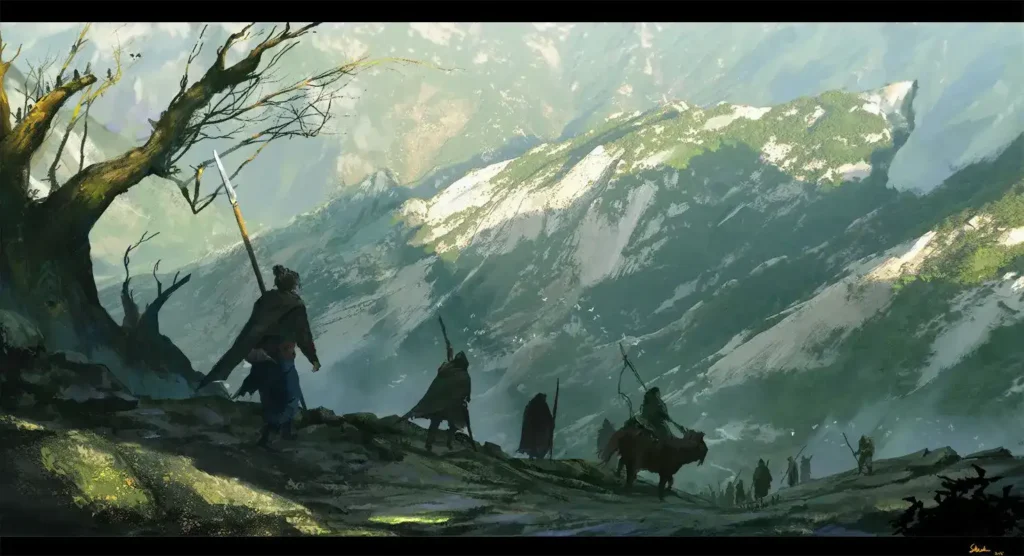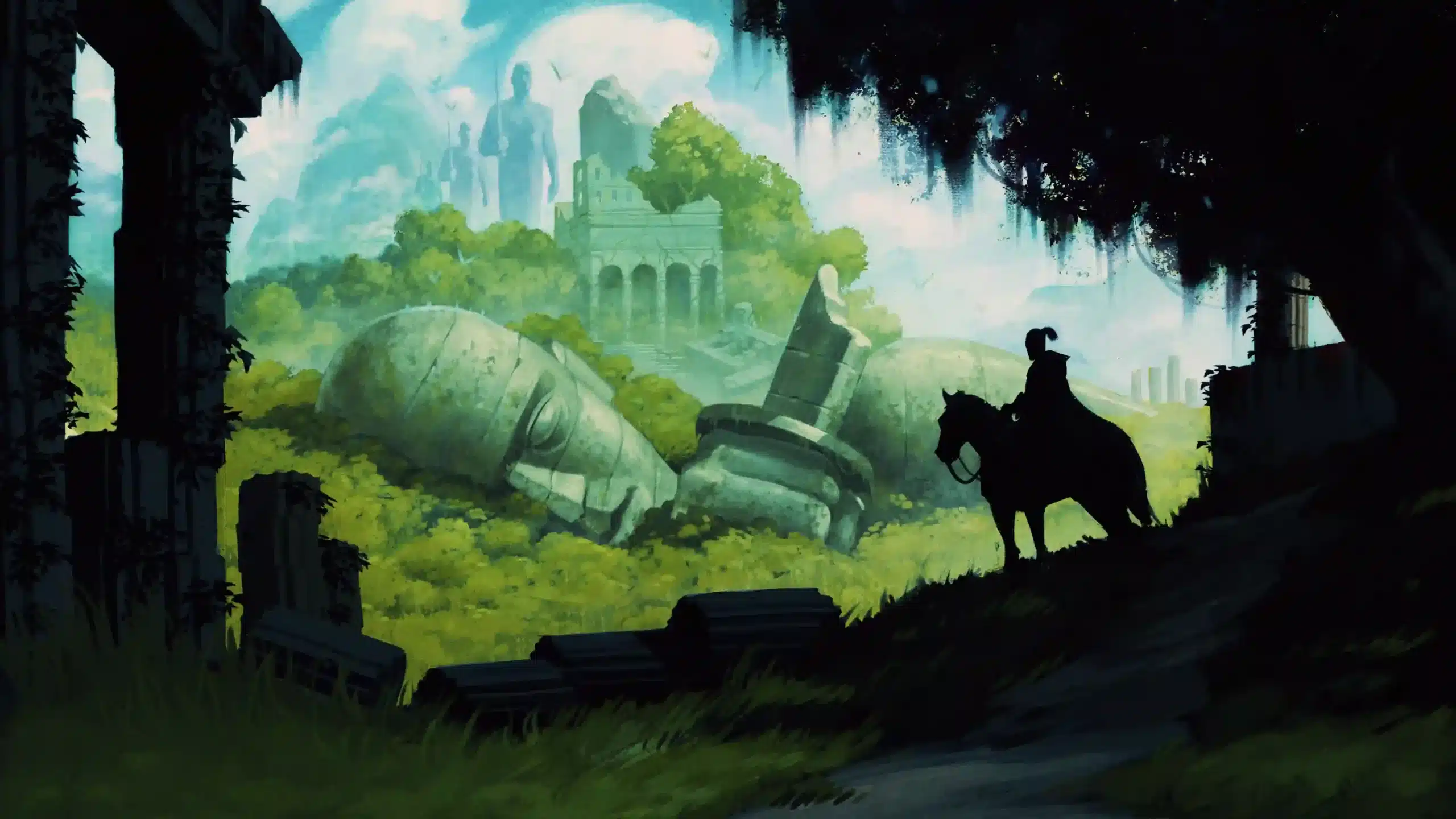In Dungeons and Dragons, such as in any Roleplaying game, you are expected to be an adventurer, and as such, you will have to make all sorts of Movements, and that’s why it is important to understand how the movement work in DnD 5e.
How can you manage travel distances as a GM?
First of all, how does the GM manage travel distances?
The GM can summarize the adventurers’ motion without calculating actual distances or travel instances: “You cross the swamp and, suddenly, you discover the dungeon front late within the night of the third day.” Even in a dungeon, specifically a big dungeon or a cave network, the GM can summarize movement among encounters: “After killing theEttin at the doorway to the ancient dwarven stronghold, you seek advice from your map, which leads you through miles of echoing corridors to a chasm bridged by means of a slender stone arch.”
However, from time to time it’s vital to recognize how long it takes to get from one spot to any other, whether the answer is in days, hours, or minutes. The policies for determining journey time depend upon the following factors:
- the rate and journey pace of the creatures moving
- the type of terrain they’re traveling over.
Another point to address is how fast a character moves, so…how do you calculate speed in D&D 5e?
Travel Pace
Every character and monster has a pace, which represents the distance in feet that the individual or monster can stroll in 1 round. This range assumes brief bursts of lively movement during a lifestyles-threatening scenario. The following regulations determine how a long way a person or monster can move in a minute, an hour, or a day.
Even as journeying, a collection of adventurers can flow at an ordinary, speedy, or sluggish tempo, as shown at the travel tempo table. The desk states how some distance the birthday celebration can move in a time period and whether the pace has any effect. a quick pace makes characters less perceptive, whilst a slow tempo makes it possible to sneak around and search an area more carefully.

The travel pace table generally assumes that characters travel for 8 hours per day. With Forced March, they could push on beyond that restriction, with the risk of incurring exhaustion.
For every extra hour of travel past eight hours, the characters cowl the gap proven within the Hour column for their pace, and each character should make a constitution saving throw at the end of the hour: the DC is 10 + 1 for each hour past 8 hours. On a failed saving throw, the character suffers one level of exhaustion.
As you can see from the table are to be taken into account the pace, attached vehicles and terrain.
| Pace | Minute (Distance) | Hour (Distance) | Day (Distance) | Effect |
| Fast | 400 feet | 4 miles | 30 miles | −5 penalty to passive Wisdom (Perception) scores |
| Normal | 300 feet | 3 miles | 24 miles | – |
| Slow | 200 feet | 2 miles | 18 miles | Able to use Stealth |
How to use Mount and Veicoles
For brief spans of time and (up to an hour), many animals pass a lot quicker than humanoids. A hooked-up character can trip at a gallop for about an hour, overlaying two times the usual distance for a fast tempo. If fresh mounts are to be had each eight to ten miles, characters can cowl large distances at this tempo, but that is very rare except in densely populated regions.
Characters in wagons, carriages, or other land vehicles select a pace as normal. Characters in a waterborne vessel are constrained to the rate of the vessel, and they do not suffer penalties for a fast tempo or advantage blessings from a slow pace. relying on the vessel and the scale of the group, ships might be able to journey for as much as 24 hours in step with day.
A notable example comes from certain unique mounts, a pegasus or griffon, or special cars, including a carpet of flying, which permit you to tour more swiftly.
Changes of speed through different terrains
The travel speeds given in the Travel Pace table assume relatively simple terrain: roads, open plains, or clear dungeon corridors. But adventurers often face dense forests, deep swamps, rubble-filled ruins, steep mountains, and ice-covered ground–all considered difficult terrain.
You move at half speed in difficult terrain–moving 1 foot in difficult terrain costs 2 feet of speed–so you can cover only half the normal distance in a minute, an hour, or a day.
How to move your character during exploration and action
Movement through dangerous dungeons or wilderness areas often involves more than simply walking.
Adventurers might have to use in a strategic way the following actions:
And in some cases they might also be able to:
CLIMBING, SWIMMING AND CRAWLING
While climbing or swimming, each foot of movement costs 1 extra foot (2 extra feet in difficult terrain), unless a creature has a climbing or swimming speed. At the GM’s option, climbing a slippery vertical surface or one with few handholds requires a successful Strength (Athletics) check. Similarly, gaining any distance in rough water might require a successful Strength (Athletics) check. Otherwise, it is unnecessary to carry out athletic checks for ordinary climbing and swimming.
JUMPING
The first element you have to know is that jumping is connected with your strength: the stronger you are, the higher your jumps can be.
Long Jump. When you make a long jump, you cover a number of feet up to your Strength score if you move at least 10 feet on foot immediately before the jump. You can leap only half that distance when you make a standing long jump. Either way, each foot you clear on the jump costs a foot of movement.
This rule assumes that the height of your jump doesn’t matter, such as a jump across a stream or chasm. At your GM’s option, you must succeed on a DC 10 Strength (Athletics) check to clear a low obstacle (no taller than a quarter of the jump’s distance), such as a hedge or low wall. Otherwise, you hit it.
When you land in difficult terrain, you must succeed on a DC 10 Dexterity (Acrobatics) check to land on your feet. Otherwise, you will end up landing prone.OUCH
SPECIAL TYPE OF JUMP: HIGH JUMP
When you make a high jump, you leap into the air a number of feet equal to 3 + your Strength modifier if you move at least 10 feet on foot immediately before the jump. You can jump only half that distance when you make a standing high jump. Either way, each foot you clear on the jump costs a foot of movement. In some circumstances, your GM might allow you to make a Strength (Athletics) check to jump higher than you normally can.
You can extend your arms half your height above yourself during the jump. Thus, you can reach above you a distance equal to the height of the jump plus 1 1/2 times your height.
FLYING
Flying is not generally a movement that is naturally available to characters. This type of movement is generally a very useful way to travel toward your destination and has a very tactical use in combat.
The key element in using flight is that it changes in a radical way how you will look at the combat scenario: now you will have to consider also the third dimension, the height of the character/ creature in that situation.
Any creature with flight speed is also very effective in the following situations:
- engaging an enemy
- escaping dangerous situations
- Get out of range of many attacks
- Get out of range of many spells,
These elements are translated by an increase in the CR of that creature and give them also the trait that allows them not to provoke opportunity attacks.
HOVERING
What happens when a flying creature is thrown to the ground prone? His speed of movement will be reduced to 0 or otherwise he will have difficulty shooting, probably receiving damage from falling or being captured by the enemy. But if the creature can hover, then this danger is certainly less, managing to stay in balance in their place without suffering damage from fall.
In the Monster Manual, creatures such as the Beholder or the Flameskull have a stationary flight speed, referred to as “fly 40 ft (hover).
BURROWING
In dnd there are creatures with a speed of digging, such as , allowing him to bypass obstacles, enemies and/or escape.
The speed of digging allows you not to be seen, making spells and attacks to see enemies in these situations, useless. Surely it is not a fast action like others, but with a little creativity and ingenuity you could exploit it in a thousand ways, and why not, find something valuable too?
How to combine different movement speeds
You can mix up your movements using the appropriate speed at that particular time or circumstance
To do this, the distance traveled must be subtracted from the speed of the new movement and then continued. If the result is 0 or lower, you cannot use the new movement speed on the same turn.
Taking a more practical example, let’s imagine that as a character you are a wizard who casts the Fly spell.
The movement speed could be of 30 ft and the flight speed of 60 ft.
Let’s assume you flew 20 feet to the top of a building to defeat an enemy and then ran 10 feet, killing it.
Considering that you flew 20 feet and walked 10, you will need to subtract it from your initial fly speed of 60 feet. You’ll have another 30 feet to fly.
WRAP UP – Movement in DnD 5e
So remember that movement is a very important part and you can make the most of it by doing a thousand different things using cunning and intelligence.
Since the movement represents the maximum amount your character can reach in a single turn, you can also stop the movements to perform multiple actions.
Credits
- Some other suggestions for the Movement
- Start with Dungeons and Dragons
- Follow this guide to know the different damage types in DnD 5
 Skip to main content
Skip to main content

